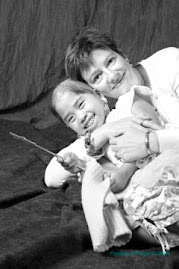The Beauty of Mass: What the Japanese Tea ceremony and the Mass Have in Common
As part of my journey toward Catholicism, part of what drew me to the Faith in many ways is the ritual and beauty of the Mass. There is a certain comfort in doing things in a prescribed manner, and repeating gestures over the course of time. As Americans, we often find the process of doing something the same way every time, boring or repetitive. Sometimes, we need to look at things from a different perspective. In Asian culture, there is a beauty in simple gestures, in repetition and to use American language to describe ritual: it is process orientated instead of being outcome orientated. Let me explain what I mean by that.
Have you ever watched the Japanese tea ceremony? If not, I encourage you to click on the link below and spend about 10 minutes watching a traditional Japanese tea ceremony. What you will come to understand by doing this, is that it is not the cup of tea at the end that is most important; instead, the tea ceremony is about the acts and steps themselves. In other words, the ceremony is an end in and of itself, and in many ways, the tea that results is part of the process, not the end. The tea is a means to an invitation to a way of life, a way of thinking and a way of viewing the world. In many ways, this invitation is to the Zen mindset, where repetitive gestures allow us to go deeper in our mindsets. We can think about other aspects of Japanese culture and Zen thought that follow along the same lines, from the art of sushi to the art of origami. The process of creation with attention to detail and with the idea that HOW something is done is as important as the act itself, strikes me as signficant and meaningful.
Fast forward to me experiencing the Mass multiple times when Max was a student at St. Mary School. As one experiences the Mass, from the words and songs that are repeated each time, to the liturgy and gestures of the Eucharist, to the priest cleaning the cups and bowls at the end of the Mass, there is a quietness of mind, a peacefulness, and a quiet stillness that pervades as one experiences the Mass. The repeated lines and gestures are not just empty words nor are they empty gestures. They give rise to the very body and blood of Christ, while simultaneously enveloping one in an active spirit. I feel a serene sense of peace as I watch the Priest lift the cup and the Eucharist, repeat the words that bring life, and then, at the close of the Mass, the quiet gesture of cleaning the chalice and bowls remind me of the presence of God at work in the Mass, as each element is treated with respect, care and reverence.
I think sometimes it is hard for Americans in particular to sit and quiet the mind. Somehow we feel we have to be completely active to be in an experience. Very rarely are we asked to or do we tolerate an experience of watching and quiet participation. In our fast-paced world, we rarely tolerate the quiet moments in life, even though we claim that is what we want. The reality is that passivity and receptivity often can yield a stronger active response from us, than moments in which hyperactivity is demanded or asked of us.
It may seem strange to compare these two seemingly unrelated rituals, but in some ways, they are more alike than they are different. I was telling a friend the other day how strange it was that I had to take a journey from Methodism through Buddhism to arrive at Catholicism. Keeping with my theme about how the journey is as important as the destination, I guess I couldn't arrive home until I traveled the right path. May you each find your path home.
Japanese Tea Ceremony
.jpg)
